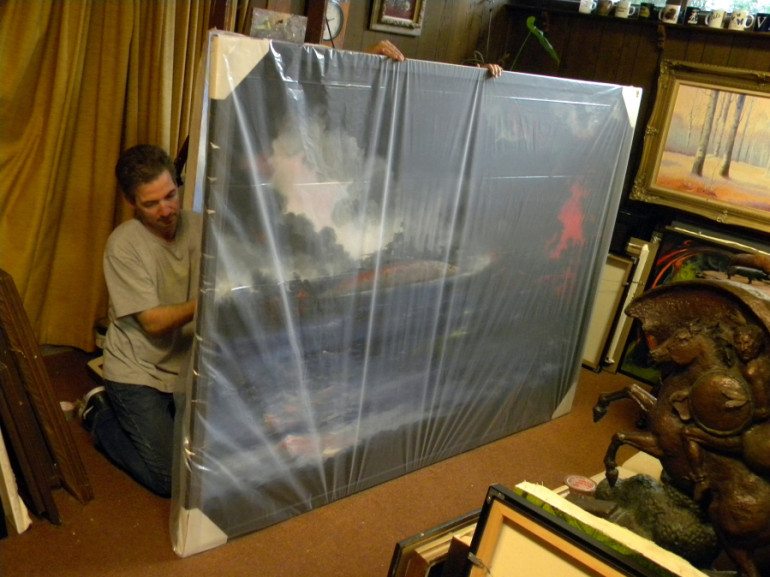Some of these historical legacies — such as the story that resonates with museum official Toni Kiser — were buried for years in footlockers.
In Gordon Sage’s case, it spent 50 years percolating beneath his beret.
Soon, the battlefield impressions of the Vancouver artist and veteran will be part of the National WWII Museum. As The Columbian reported on Wednesday, Sage’s painting of the attack on Pearl Harbor has been acquired by the World War II museum in New Orleans.
Sage was a Marine serving aboard the USS Maryland, one of the battleships targeted by Japanese bombs and torpedoes.
Placing something in the museum is not merely matter of volunteering a donation, by the way; there is a lot of 70-year-old military memorabilia in America’s basements and attics.
“We are not able to accept everything we are offered,” said Kiser, assistant collections director. “As the WWII generation is dying, we thought (donations) would decline; they’ve increased. Now children of WWII veterans are donating” artifacts.
A memorable example was the footlocker of a man who’d been killed in action. Contents included the civilian suit he wore when he entered the service … the suit he was planning to put back on when the war was over. And there was the uniform he’d worn when his formal military portrait was taken.
The top layer represented his death. There were about 25 sympathy letters and cards to the soldier’s grieving family from members of the community.
The footlocker “had been stashed in an attic and nobody had opened it for decades,” Kiser said.
Exhibits such as Sage’s painting weren’t even part of the museum’s plan.
“We didn’t really intend to collect art. It was not part of our mission statement,” Kiser said. Now curators are “recognizing how veterans are able to process their experiences” through art.
The 93-year-old veteran and daughter Donna Sage watched Thursday as two art transporters bundled up his painting. After getting the painting ready for shipping, Bruce Dailey asked: “Sorry to see it go?”
“No,” Donna said. “It’s going to such a beautiful place.”
Then, as Dailey and his wife, Pawn, prepared to ease the 7-foot-wide painting through the door and into their truck, he assured the Sages: “We’ll take good care of it.”
But they weren’t saying goodbye, Gordon Sage noted. It was a see-you-later moment.
He and his daughter already have plans to visit New Orleans and see the painting on display.
Off Beat lets members of The Columbian news team step back from our newspaper beats to write the story behind the story, fill in the story or just tell a story.




